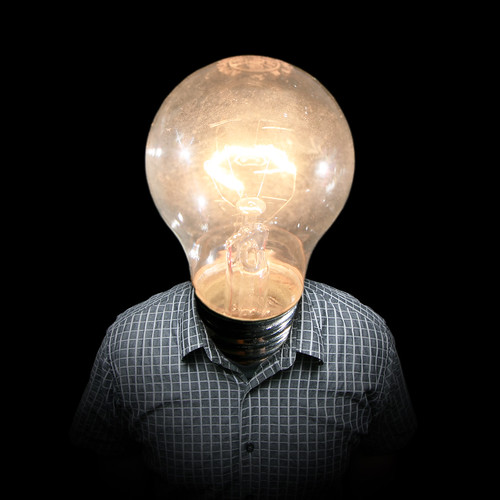I teach at a distributed learning (DL) school and though this is home learning, we do encourage most of our high school students to show up for a face-to-face class for 2 hours on Thursday mornings. It can be challenging wrangling 20 plus kids from grades 8 - 11 who are all at different places in their (different) courses. My colleague and I have used the time to check up on where kids are at, prod them to get work done, provide tutoring and do mini-lessons to the whole group (on studying for example). My colleague has also pulled out grade groups to go over grammar and to discuss their reading journals. We've found that our students are far more successful when we have this regular face to face contact with them.
How Can You Do Science Without Labs?
Today was the first time I was able to pull out a group to work on a science lab. In a DL program labs often get short shrift. It can be time consuming for the student to complete the labs, they often feel at sea--not sure if they are getting the expected results, or unsure of what they should be observing. While this also happens in a traditional classroom, at least the teacher and peers can support the student.
Seeing the Lightbulbs Go On

Photo by Cayusa Attribution-NonCommercial License
I had 4 grade nines work on an electricity lab; comparing series and parallel circuits. I really baby stepped them through the lab. We went over the proper lab format and I dictated or wrote what they needed to include at each step. I guided them through setting up the circuits and drawing the schematics. One of the students was really adept at setting up the combined series / parallel circuit and he explained to the others how to do it. He used what he had learned earlier in the lab to confirm that he had it set up correctly. We discussed their observations and what they meant. When we got to the final section of the lab write-up, the conclusion, I explained how it should be set up and said "Here's where you explain what you learned from the lab, so what have you learned?" The response was great; "A lot!" And then they went on to tell me the things they learned in a very animated way. I just don't think that these kids would have gotten a lot out of this lab had they been doing it by themselves at home.
"What did you learn"--"a lot!" I'm still smiling :-)
That is great - what a wonderful feeling! I read an article where students were given that as inquiry and had to figure out how to make the bulb light. Slow groups learned from fast groups and fast groups had to find the other way it light. Have you ever tried that or think that students can do this? I am hoping to be using more inquiry but wonder how it has worked for some.
ReplyDeleteKa pai Claire!
ReplyDeleteThe Correspondence School of New Zealand, where I teach, sends Science boxes to all students following a Science course. For many students there is no lab.
We also teach students (at a distance) who are in schools with equipped labs.
But for the full-time students who have to study on their own, the Science Box provides a wonderful option.
Each Science box is planned and packed with materials and equipment according to the course that's associated with it. Activities are written with a mind to use materials and equipment that are readily available in the home or purchasable from local stores. Other materials and equipment are in the Science box.
Learners just love to do Science activities. We sent them the neccesary safety equipment (safety glasses, tongs etc) and give guidance on when and how to use these.
Ka kite
from Middle-earth
Kia ora Claire,
ReplyDeleteWhen equipment access is at a premium, I flick my students the virtual electric lab. There's more there than first seen on entering. Kids love it, and you can always give them an instruction to go seek.
:-)
Catchya later
@Louise--I love your idea! Hopefully all students would be able to get the bulb to light and in the process they'd understand that it has to be a complete circuit. You may have to limit the supplies that the kids use for the first circuit; I could see some feeling like they had to use every electrical lead. The really adept kids would start building parallel circuits and series / parallel combos. Great stuff!
ReplyDelete@Ken--our students also receive a science kit and the labs they are asked to do also try to utilize common household materials.
For some of the labs the students generally have no problems, but I think that most would have difficulty with the electricity lab. For instance, as we did the lab we found that though it only called for one cell in the circuit it really worked much better with 4. Many students would not have realized this if working on their own at home. And setting up the parallel circuits can be quite tricky.
Thanks for the link to your virtual electric lab--very cool! The rheostat simulation was particularly well done.